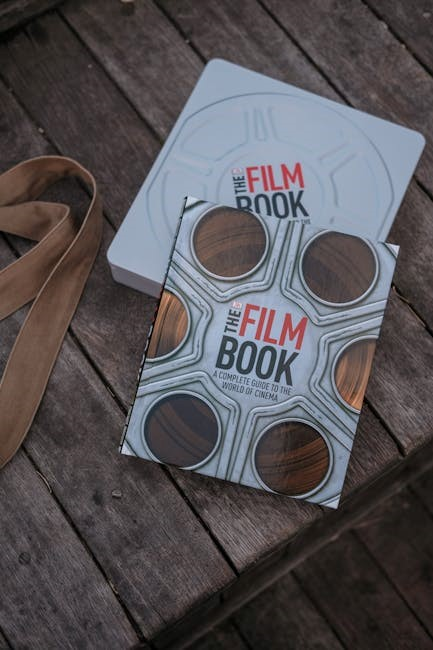bartenders guide book
The Bartender’s Guide Book is an essential resource for professionals and enthusiasts, offering insights into cocktail creation, techniques, and industry trends․ From classic recipes to modern innovations, it serves as a foundation for mastering mixology, ensuring creativity and precision behind the bar․
1․1 The Importance of a Comprehensive Bartender’s Guide
A comprehensive bartender’s guide is indispensable for mastering the art of mixology․ It provides standardized recipes, techniques, and insights, ensuring consistency and creativity․ From classic cocktails to modern twists, such guides offer a foundation for understanding flavor profiles and experimentation․ They also serve as valuable resources for professionals, helping to elevate skills and stay updated on industry trends․ A good guide is a bartender’s roadmap to excellence and innovation․
1․2 Evolution of Cocktail Books Over Time
Cocktail books have evolved significantly since Jerry Thomas’s 1862 “Bartender’s Guide,” the first published guide․ Early books focused on basic recipes, while modern editions incorporate scientific techniques, flavor pairing, and creative twists․ Classic texts like “The Fine Art of Mixing Drinks” by David A․ Embury and “The Joy of Mixology” by Gary Regan laid foundations․ Today, books such as “The PDT Cocktail Book” and “Cocktail Codex” offer advanced insights, reflecting mixology’s growth into a sophisticated craft․

Essential Knowledge for Bartenders
Mastering essential techniques, understanding ingredients, and refining flavor profiles are vital skills․ Familiarity with tools and recipes ensures versatility․ Creativity, precision, and presentation elevate bartending craftsmanship․
2․1 Classic Cocktail Recipes and Their Origins
Classic cocktails like the Old Fashioned and Martini have deep historical roots, originating in the 19th century․ The Old Fashioned, made with bourbon or rye, sugar, and bitters, dates back to the 1860s․ The Martini, crafted with gin and vermouth, emerged in the late 1800s․ These iconic drinks have evolved over time, yet their original recipes remain timeless, showcasing the art of mixology and influencing modern creations․
2․2 Modern Twists on Traditional Drinks
Modern bartenders innovate by infusing classic cocktails with fresh flavors and techniques․ Molecular mixology introduces spherification and foam, while house-made infusions and locally sourced ingredients enhance traditional recipes․ Sustainability also plays a role, with eco-friendly methods gaining prominence․ These creative adaptations breathe new life into timeless drinks, ensuring cocktail culture remains dynamic and evolving, appealing to both purists and adventurous drinkers alike․

The Best Bartender’s Guides Available Today
The Bartender’s Bible and The Bar Book are popular among bartenders, offering essential guides for classic and modern techniques in mixology․
3․1 “The Bartender’s Bible” for Beginners
“The Bartender’s Bible” is a top choice for newcomers, offering clear instructions for crafting cocktails․ It covers essential tools, techniques, and recipes, making it a perfect guide for those starting their mixology journey․ With its comprehensive approach, it simplifies the art of bartending, ensuring beginners can master classic drinks and experiment with confidence․
3․2 “The Bar Book” for Professional Bartenders
“The Bar Book” is tailored for experienced bartenders, offering advanced techniques and in-depth knowledge․ It covers classic methods, modern twists, and presentation tips, providing a comprehensive guide for refining skills․ This book is a valuable resource for professionals seeking to elevate their craft and stay updated on industry standards and innovative practices in mixology․
3․3 “Cocktail Codex” for Advanced Mixology
“Cocktail Codex” is a masterclass in mixology, offering a deep dive into the fundamentals of cocktail creation․ It provides formulas and techniques for crafting innovative drinks, while also exploring the history and evolution of classic recipes․ This book is a favorite among both enthusiasts and professionals, delivering a comprehensive guide to advanced mixology and inspiring bartenders to push the boundaries of their creativity․
The Science Behind Mixing Drinks
The science behind mixing drinks involves understanding flavor profiles, ice, dilution, and temperature, which are crucial for balancing cocktails and enhancing their overall taste experience․
4․1 Understanding Flavor Profiles and Pairings
Understanding flavor profiles and pairings is fundamental to crafting exceptional cocktails․ Bartenders must analyze how sweet, sour, bitter, and umami elements interact․ Techniques like balancing acidity with sweetness and complementing flavors with herbs or citrus create harmonious drinks․ Tools like flavor wheels help identify complementary and contrasting notes, enabling bartenders to innovate while respecting classic principles․ This knowledge elevates mixology, ensuring each cocktail is both balanced and memorable․
4․2 The Role of Ice, Dilution, and Temperature in Cocktails
Ice, dilution, and temperature are critical in cocktail preparation․ Ice chills and dilutes drinks, balancing flavors without overpowering them․ Proper dilution ensures cocktails aren’t overly strong, while controlled temperature enhances aroma and taste․ Techniques like chilling glasses and using quality ice prevent over-dilution, maintaining drink integrity․ This attention to detail elevates the sensory experience, making it a cornerstone of professional bartending․
Tools and Equipment Every Bartender Needs
Essential tools include shakers, jiggers, muddlers, and bar spoons․ Proper equipment ensures precision, quality, and professional presentation, making them vital for crafting exceptional cocktails․
5․1 Essential Bar Tools for Crafting Cocktails
Essential bar tools are vital for crafting cocktails․ A Boston shaker mixes and chills ingredients, while a jigger ensures precise measurements․ A muddler crushes fruits and herbs, releasing flavors․ Hawthorne strainers filter ice, and bar spoons stir and layer drinks․ A citrus juicer extracts fresh juice, and ice tongs handle ice efficiently․ These tools are fundamental for any bartender, enabling creativity and professionalism behind the bar․
5․2 Glassware and Garnishes for Professional Presentation
Proper glassware enhances the cocktail experience, with Highball, Old Fashioned, Martini, and Coupe glasses being essentials․ Garnishes like citrus twists, olives, and mint sprigs add visual appeal and aroma․ Selecting the right glass and garnish elevates presentation, making each drink visually stunning and professionally served․ These elements are crucial for creating a memorable and refined drinking experience for patrons․

The Role of the Bartender in the Modern Industry
Bartenders are now seen as mixologists, blending creativity, skill, and hospitality․ They craft unique experiences, engage customers, and drive cocktail culture, making them central to the industry’s evolution․
6․1 From Classic Bartenders to Modern Mixologists
Historically, bartenders were seen as skilled mixers of drinks, but today they are celebrated as creative artists․ The transition from classic bartenders to modern mixologists reflects a shift in focus from simple drink preparation to crafting unique, innovative experiences․ Influenced by pioneers like Jerry Thomas and contemporary experts, modern mixologists blend technique, flavor science, and storytelling, elevating bartending into a respected culinary art form․
6․2 The Impact of Bartenders on Cocktail Culture
Bartenders have profoundly shaped cocktail culture by driving trends, innovating techniques, and creating iconic drinks․ Their creativity and expertise have elevated mixology into a celebrated art form, influencing global tastes and social experiences․ From crafting signature cocktails to reviving classic recipes, bartenders continue to inspire and redefine the culinary and cultural landscape of the beverage world․

Advanced Techniques for Expert Bartenders
Expert bartenders explore molecular mixology, experimental ingredients, and innovative methods to push creative boundaries․ These techniques redefine cocktail artistry, offering unique experiences that captivate discerning palates․
7․1 Molecular Mixology and Experimental Drinks
Molecular mixology revolutionizes bartending by applying scientific techniques to create innovative drinks․ Using tools like siphons and centrifuges, bartenders craft unique textures and flavors, transforming cocktails into edible art․ Experimental ingredients and methods, such as foam, gel, and sphereification, redefine the boundaries of mixology, offering guests extraordinary sensory experiences that blend chemistry, creativity, and taste․
7․2 Creating Signature Cocktails for Unique Experiences
Signature cocktails are crafted to offer distinctive flavors and storytelling, enhancing customer experiences․ By combining house-infused spirits, fresh ingredients, and artistic presentation, bartenders create memorable drinks․ Techniques like infusion, fermentation, and innovative garnishing help differentiate these cocktails, making them a hallmark of modern mixology and a key element in establishing a bar’s identity and appeal․
The Future of Bartending and Cocktail Trends
The future of bartending emphasizes sustainability, innovation, and personalized experiences․ Trends include eco-friendly practices, low-alcohol drinks, and experimental ingredients, shaping a dynamic and evolving industry landscape․
8․1 Emerging Trends in the Cocktail World
Emerging trends in the cocktail world include a focus on sustainability, low-alcohol drinks, and experimental ingredients․ Bartenders are increasingly incorporating hyper-local and foraged ingredients, while zero-waste practices gain traction․ Health-conscious cocktails, such as those with less sugar or alcohol, are also rising in popularity․ These innovations reflect evolving consumer preferences and a growing emphasis on eco-conscious bartending, shaping the future of mixology․
8․2 Sustainability in Bartending Practices
Sustainability in bartending involves reducing waste and using eco-friendly ingredients․ Techniques like repurposing peels and scraps into syrups or garnishes minimize landfill contributions․ Eco-conscious spirits and locally sourced products are gaining favor, lowering carbon footprints․ Zero-waste cocktails and biodegradable garnishes are also trending, reflecting a broader industry shift toward environmental responsibility and ethical practices, aligning with consumer demand for greener options in the culinary world․
The Bartender’s Guide Book stands as a timeless testament to the art of mixology, offering a foundation for creativity and inspiring continuous learning in the ever-evolving world of cocktails․
9․1 The Enduring Legacy of Bartender’s Guides
Bartender’s guides have left an indelible mark on mixology, preserving timeless techniques and inspiring innovation․ From Jerry Thomas’s 1862 pioneering work to modern classics like The Bartender’s Bible and The Bar Book, these resources have educated generations, setting the foundation for contemporary bartending․ They continue to influence cocktail culture, ensuring the art of mixing drinks remains both accessible and evolving for professionals and enthusiasts alike․
9․2 Continuous Learning for Bartenders
Continuous learning is vital for bartenders to stay competitive and innovative․ With evolving trends and techniques, staying updated on new ingredients, methods, and tools is essential․ From classic cocktail books to modern guides like Cocktail Codex and The Bar Book, these resources provide comprehensive knowledge․ Embracing lifelong learning ensures bartenders adapt to industry changes, refine their craft, and deliver exceptional experiences, fostering growth and creativity behind the bar․
